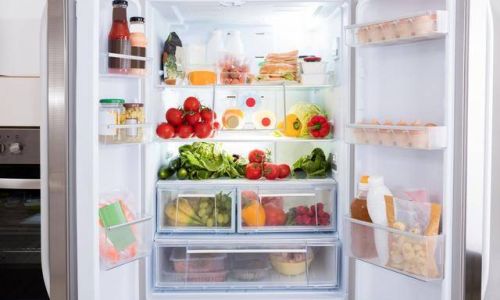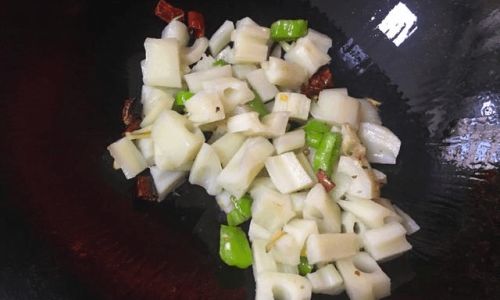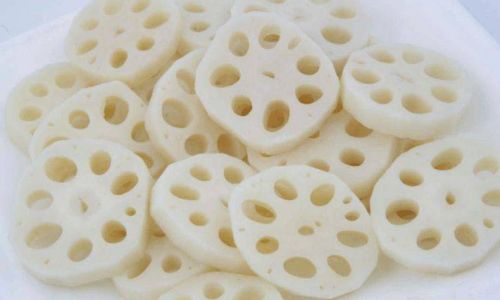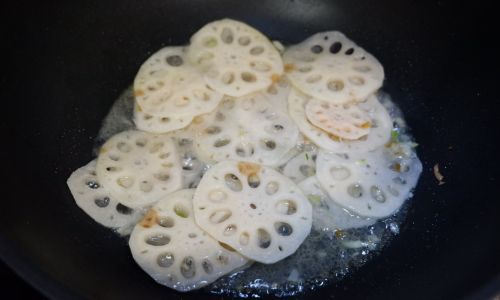Pineapples, with their spiky exteriors and vibrant tropical sweetness, are a beloved fruit worldwide. Yet, their storage often raises questions, particularly regarding refrigeration. Many home cooks and pineapple enthusiasts wonder: Can you refrigerate pineapples without compromising their taste, texture, or nutritional value? This article delves into the science and practicality of storing pineapples, exploring the pros and cons of refrigeration, alternative methods, and expert tips to keep this exotic fruit at its best.
Understanding Pineapple’s Natural Habitat and Ripening Process
To grasp whether refrigeration is suitable for pineapples, it’s essential to understand their origins. Native to South America, pineapples (Ananas comosus) thrive in warm, humid climates. Unlike many fruits that continue to ripen after harvest, pineapples stop ripening once picked. This means the sugar content and flavor profile are fixed at the time of harvest. However, the fruit’s texture and juiciness can still deteriorate over time, making storage methods critical.

A ripe pineapple typically has a golden-yellow hue, a firm but slightly yielding texture, and a sweet, floral aroma at its base. Overripe pineapples may develop a fermented smell, soft spots, or brown discoloration, while underripe ones remain green, hard, and tart. Since pineapples do not ripen further post-harvest, refrigeration is not a tool to “finish” ripening but rather a way to slow down degradation.
The Science Behind Refrigeration and Fruit Storage
Refrigeration works by lowering temperatures, which slows the metabolic processes in fruits and vegetables. This reduces the activity of enzymes responsible for ripening and decay, such as those that break down cell walls, causing softening. For pineapples, refrigeration can extend their edible lifespan by several days. However, cold temperatures also pose risks, such as freezing injuries or texture changes, if not applied correctly.
Pineapples are tropical fruits, meaning they evolved to tolerate warmth rather than cold. Sudden exposure to temperatures below 40°F (4°C) can damage their cells, leading to chilling injury—a condition where the fruit develops brown patches, loses flavor, or becomes mealy. Modern refrigerators typically operate between 35°F and 38°F (1.7°C to 3.3°C), which is within the danger zone for tropical fruits. Yet, with proper handling, refrigeration can still be a viable option for cut or sliced pineapples.
Storing Whole Pineapples: To Refrigerate or Not?
Whole, uncut pineapples are best stored at room temperature, ideally between 65°F and 75°F (18°C to 24°C). At these temperatures, the fruit retains its crisp texture and tropical aroma for up to three days. Storing whole pineapples in the refrigerator is generally unnecessary and may even harm their quality. The cold can cause the flesh to become grainy or the core to develop a fibrous texture.
However, if you live in a hot or humid climate, room temperature storage might accelerate spoilage. In such cases, placing the whole pineapple in the refrigerator’s crisper drawer—where humidity levels are slightly higher—for a day or two can help slow deterioration without significant texture loss. Always ensure the pineapple is dry before refrigeration to prevent moisture-related issues like mold.
Caring for Cut Pineapple: Refrigeration Best Practices
Once a pineapple is cut, its exposed flesh becomes vulnerable to bacteria and oxidation. Refrigeration is highly recommended for cut pineapple to prevent spoilage and maintain freshness. Here’s how to do it right:
- Preparation: Remove the skin, core, and eyes (the small black spines) before cutting the fruit into chunks, slices, or spears.
- Container Selection: Store cut pineapple in an airtight container or resealable plastic bag. This minimizes exposure to air, which can cause browning and flavor loss.
- Temperature Control: Place the container in the main compartment of the refrigerator, not the crisper drawer, to avoid excess humidity.
- Shelf Life: Cut pineapple typically lasts 3–5 days in the refrigerator. Check for off-smells, sliminess, or excessive softness as signs of spoilage.
For added freshness, some sources suggest wrapping cut pineapple in plastic wrap or submerging it in juice (like pineapple or orange juice) to reduce oxidation. However, these methods may alter the fruit’s natural taste.
Alternatives to Refrigeration: Countertop Storage and Other Methods
If refrigerator space is limited or you prefer to avoid cold storage, countertop methods can work for whole pineapples. Place the fruit stem-side down on a plate or cutting board in a cool, dry area away from direct sunlight. This position prevents moisture from accumulating in the crown, reducing the risk of mold.
For cut pineapple, consider these alternatives:
- Freezing: While freezing alters texture (making it softer upon thawing), it’s ideal for smoothies, sauces, or baked goods. Spread chunks on a baking sheet, freeze until solid, then transfer to a freezer-safe bag. Frozen pineapple lasts 8–12 months.
- Dehydration: Dehydrated pineapple slices make chewy, sweet snacks. Use a dehydrator or oven on low heat until leathery.
- Canning: Preserve pineapple in syrup or juice for long-term storage. Follow USDA-approved canning guidelines to avoid botulism risks.
Freezing Pineapple: A Long-Term Solution
Freezing is an excellent way to preserve pineapple’s flavor for future use. Here’s a step-by-step guide:

- Peel and Core: Remove the tough outer skin, eyes, and central core.
- Cut into Pieces: Slice into bite-sized chunks or rings.
- Blanch (Optional): For better texture retention, blanch pineapple in boiling water for 1–2 minutes, then shock in ice water.
- Dry and Pack: Pat the pieces dry with paper towels to prevent ice crystals. Arrange on a baking sheet and freeze until firm.
- Store: Transfer to airtight freezer bags or containers, removing excess air. Label with the date.
Frozen pineapple is perfect for smoothies, cocktails, or compotes. Thaw in the refrigerator or use directly in recipes.
Signs of Spoilage and When to Discard
Knowing when a pineapple has gone bad is crucial for food safety. For whole pineapples, look for:
- Soft Spots or Leakage: Overripe fruit may develop dark, mushy areas or ooze liquid.
- Foul Odor: A fermented or vinegar-like smell indicates spoilage.
- Mold: Gray, green, or white fuzz on the skin or crown.
For cut pineapple, discard if:
- Color Changes: The flesh turns brown or gray beyond slight oxidation.
- Texture Issues: It feels overly soft, slimy, or dry.
- Off Smells: A sour or alcoholic aroma suggests fermentation.
Creative Uses for Refrigerated Pineapple
Refrigerated pineapple isn’t just for snacking—it’s a versatile ingredient in both sweet and savory dishes. Try these ideas:
- Grilled Pineapple: Brush slices with honey and cinnamon, then grill until caramelized. Serve with ice cream or pork dishes.
- Pineapple Salsa: Mix diced pineapple with red onion, jalapeño, cilantro, and lime juice for a zesty topping.
- Pineapple Fried Rice: Add chunks to fried rice with vegetables, soy sauce, and cashews.
- Pineapple Infused Water: Add slices to pitchers of water for a refreshing twist.
Nutritional Considerations: Does Refrigeration Affect Nutrients?
Pineapples are rich in vitamin C, manganese, and bromelain—an enzyme with anti-inflammatory properties. Refrigeration slows nutrient degradation but doesn’t halt it entirely. Over time, vitamin C levels may decline slightly, but the loss is minimal within the first week. Bromelain, which is heat-sensitive, remains stable in cold storage.
However, freezing pineapple preserves nutrients almost entirely, as the cold halts enzymatic activity. Dehydration, on the other hand, concentrates sugars and nutrients but may reduce vitamin C content due to heat exposure during drying.
Expert Tips for Maximizing Pineapple Freshness
- Buy Wisely: Choose pineapples with green, fresh-looking crowns and firm flesh. Avoid those with soft spots or mold.
- Store Upright: If keeping whole pineapples on the counter, place them stem-down to prevent moisture buildup.
- Use the Crisper Drawer Judiciously: For whole pineapples in the fridge, the crisper’s higher humidity can help prevent drying, but monitor for chilling injury.
- Avoid Ethylene Gas: Pineapples produce ethylene, a ripening hormone. Store them away from ethylene-sensitive produce like leafy greens or berries.
- Repurpose Overripe Fruit: Even slightly overripe pineapple can be used in jams, chutneys, or marinades.
Conclusion: The Verdict on Refrigerating Pineapples
In summary, refrigeration is a valuable tool for preserving cut pineapple, extending its shelf life by 3–5 days without significant quality loss. Whole pineapples, however, are best stored at room temperature unless you live in a hot climate, where brief refrigeration can prevent rapid spoilage. Freezing and dehydration offer longer-term solutions, each with unique texture and flavor profiles.
By understanding the science of storage, monitoring for spoilage signs, and experimenting with creative recipes, you can enjoy pineapple’s tropical sweetness while minimizing waste. Whether refrigerated, frozen, or eaten fresh, this golden fruit remains a testament to nature’s ability to delight and nourish.





0 comments